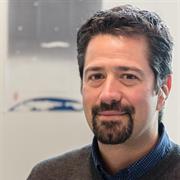About

Welcome to the Department of Physics and Astronomy at Tufts University! Our nineteen faculty, approximately 30 graduate students, and around 50 undergraduates come from all over the globe to participate in and learn about research that is exploring the physical world on a range of scales. Students in our Physics and Astronomy program:
- work on particle physics experiments at CERN and Fermilab,
- develop new understandings of condensed matter (including soft matter and biological systems)
- carry out pioneering work on galactic evolution,
- study quantum computation and physics education,
- and explore fundamental questions about the cosmos.
Our deep engagement with research informs much of the teaching that takes place here. In addition to our core set of physics courses, we help students develop their skills in instrumentation, computation, data analysis, and oral and written communication. We encourage them to see the physics in the real world, and to explore connections with other disciplines. These are all skills that are valuable in a wide range of careers and are attractive to employers. Moreover, many of our majors participate in research, and the ability to work collaboratively on cutting-edge research provides a deep and transformative learning experience for many students.
As scientists, we look to the coming years with a sense of excitement. The scientific questions we face — dark energy, dark matter, the search for a fundamental theory 'beyond the standard model', developing a deeper understanding of biophysical systems such as the brain — have the potential to revolutionize our understanding of the cosmos and our role in it. We welcome you to visit to hear more about the research and teaching that we are engaged in here at Tufts!
